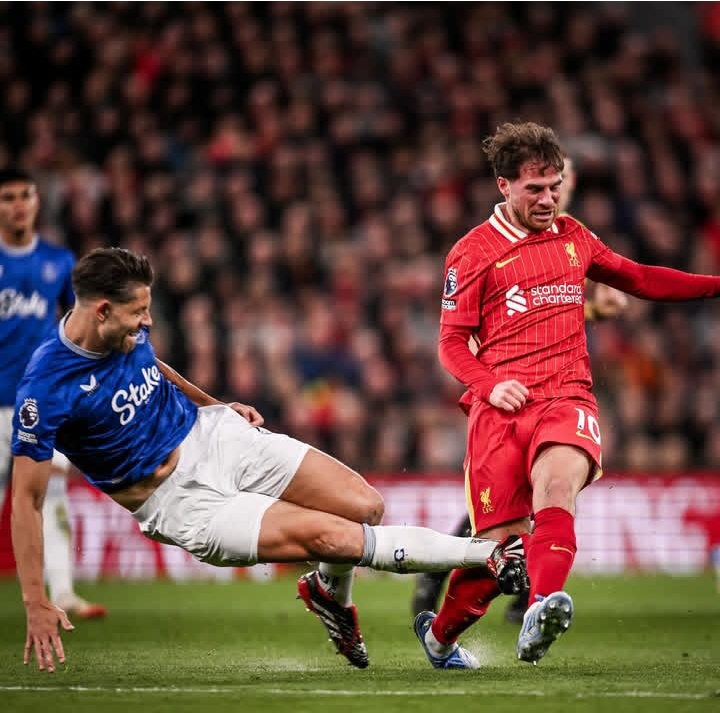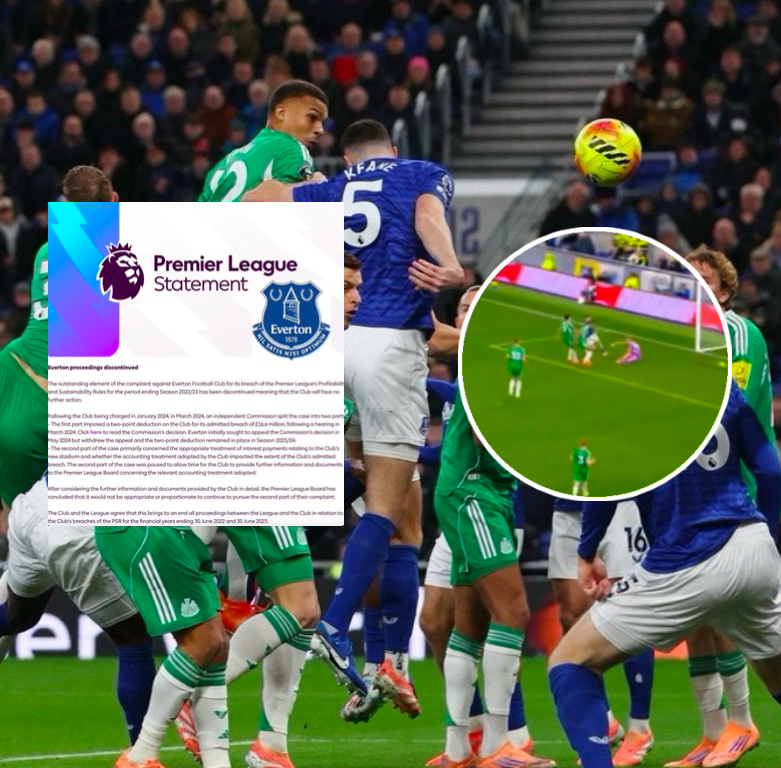PREMIER LEAGUE RELEASES STATEMENT ON TARKOWSKI CONTROVERSIAL MOMENT WITH MAC ALLISTER, INVESTIGATION LAUNCHED AFTER EXPOSURE TO LIVERPOOL FANS
Premier League Clears Tarkowski’s Incident in Everton vs. Liverpool: A Comprehensive Review
In a highly charged Merseyside derby, Everton fell to a narrow 1-0 defeat against Liverpool in the Premier League, but it was a controversial moment involving James Tarkowski that has ignited debate among fans and pundits alike. A challenge from the Everton defender on Liverpool’s Alexis Mac Allister in the first half has been the focal point, with many Liverpool fans demanding a red card. However, following a review of the incident, the Premier League has released a statement to clarify why the challenge did not warrant a red card, providing insight into the reasoning behind the referee’s decision.
The Incident in Question
The controversy occurred in the 24th minute of the match when Tarkowski went in for a tackle on Mac Allister. The Everton center-back appeared to make brutal leg contact with the Argentine midfielder, who was left in a heap on the ground. The challenge immediately drew attention, with several players surrounding the referee to voice their concerns. Replays showed Tarkowski’s leg making forceful contact with Mac Allister’s shin, leading many to believe it could have been a serious foul, deserving of a red card for endangering the safety of an opponent.
Fans’ Outrage and the Call for a Red Card
Liverpool supporters, both in the stadium and online, were quick to express their outrage. They argued that the tackle was reckless, excessive, and endangering Mac Allister’s leg, which would justify a red card according to the laws of the game. The incident sparked debates across social media, with many questioning the consistency of refereeing decisions in the Premier League.
However, as the game progressed and the referee, after consulting with VAR, opted not to issue a red card or even a yellow, the frustration among Liverpool fans intensified. Many took to various platforms to claim that the challenge should have been punished more severely.
Premier League’s Official Clarification
In response to the uproar, the Premier League issued an official statement to address the incident and clarify the reasoning behind the referee’s decision.
The Premier League’s statement emphasized the importance of intent and the context of the challenge. According to the Premier League’s statement, while Tarkowski’s tackle did make significant contact with Mac Allister’s leg, the key factor in the referee’s decision was the nature of the challenge. The statement outlined that Tarkowski’s tackle was deemed to be “not reckless enough to endanger the safety of the player,” which is the standard for issuing a red card under the laws of the game.
The League further explained that the tackle, while it could have been more controlled, did not meet the criteria for violent conduct or a serious foul play offense. The Premier League clarified that for a tackle to be deemed a red card offense, it must either be dangerous or excessive in nature, and there should be a clear indication that the player intended to cause harm or that the tackle was grossly disproportionate.
In this case, the Premier League stated that the challenge was considered to be a hard but fair one, and the player did not exhibit any malice or excessive force. The statement also reiterated that the use of VAR in this case had been appropriate, as the technology had the opportunity to review the incident in full detail but ultimately upheld the on-field decision of the referee.
VAR’s Role in the Review
VAR has been a crucial aspect of Premier League officiating, and in this instance, it was utilized to review the tackle thoroughly. The Premier League’s statement emphasized that the video assistant referees had also assessed the incident from multiple angles, which showed that while Tarkowski’s challenge was mistimed, it did not constitute violent conduct. The decision to allow the on-field referee’s decision to stand was a reflection of the balance between ensuring fair play while also taking into account the context and intent behind the challenge.
The Premier League’s transparency in explaining the VAR review and the referee’s decision was an attempt to quell some of the anger and frustration from the Liverpool fanbase.
The Bigger Picture: Refereeing Consistency
The decision has once again raised questions about refereeing consistency in the Premier League. Fans often point to incidents in which similar challenges have been treated differently, leading to accusations of inconsistency in decision-making. The Premier League has long faced scrutiny over its officiating standards, and despite improvements in technology and VAR, refereeing decisions continue to be a contentious issue.
The League’s official response aims to shed light on the guidelines used to assess tackles, hoping to alleviate concerns of bias and inconsistency. By explaining that intent, severity, and context are all critical factors in determining the outcome of such challenges, the Premier League seeks to ensure that all teams are judged by the same standards, regardless of the fixture.
Conclusion
The Tarkowski incident in Everton’s loss to Liverpool has once again highlighted the complexities of Premier League refereeing and the sometimes controversial role of VAR. The Premier League’s official statement offers clarity on why the challenge did not warrant a red card, citing the absence of intent to harm and the lack of excessive force. While the clarification may not satisfy all Liverpool fans, it serves as a reminder of the delicate balance between upholding the laws of the game and ensuring that decisions remain consistent across all matches.
As the debate continues, one thing is certain: decisions like this will keep the conversation about refereeing in English football alive, with every controversial moment sparking further discussion about how best to ensure fairness and clarity in the game.








Post Comment